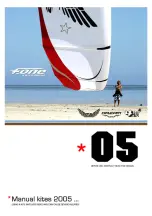
THRUSH AIRCRAFT, INC – MODEL S2R-R1340
AIRCRAFT MAINTENANCE MANUAL
Effective: 01/01/08
2-7
position (except during propeller governor
test).
Do not allow oil temperature to
exceed maximum limits.
EXTERIOR PRE-START CHECK
Visually check the aircraft for general
condition. Verify that all Camlocs on the
skin panels are fastened. Remove all
accumulations of frost, ice, or snow in cold
weather from the wing, the tail, and the
control surfaces. Check that the control
surfaces contain no internal accumulations
of ice. Remove the exhaust cover, if fitted.
If night flight is planned, check the
operation of all lights and have a flashlight
available.
After a complete exterior visual inspection
has been accomplished, the following
checklist may be used for the remainder of
the exterior pre-start checks.
PRE-START CHECKLIST
a. The aircraft should be headed into the
wind and should have the wheel
chocks in place.
b. A fire extinguisher must be readily
available in the event of an engine fire.
c. Check the engine oil level. Do not
operate with less than 4 gallons of oil.
Fill oil tank if extended flight is
anticipated. Assure that the oil system
has been serviced with the correct
grade and weight of oil (see Section
IV).
d. Clear area of personnel and loose
objects.
COCKPIT PRE-START CHECK
a. Verify that the internal control lock has
been removed and that the controls
operate
b. Place all switches in the OFF position.
c. Set the parking brake.
d. Check the fuel quantity indication in
both tanks.
e. Set the trim tabs for takeoff.
f. Turn Battery Switch ON, or to EXT
PWR position if external power will be
used to start the engine.
STARTING ENGINE
Use the following procedure to start the
R1340 engine:
Ignition switch must be OFF
when rotating the propeller by
hand.
a. If the engine has not been run in
several hours, pull the propeller
through several revolutions by hand. If
engine has not been run for more than
3 days, refer to Section 4 for
applicability of pre-oiling procedures.
b. Fuel Shutoff Valve – ON
c. Mixture – FULL RICH
d. Propeller – HIGH PITCH (low RPM)
*NOTE*
Placing the propeller control in
the High Pitch/Low RPM position
prevents momentary loss of oil
pressure due to filling the
propeller hub.
e. Carburetor Heat - OFF
f. Throttle – OPEN to 600 RPM (approx.
½ inch)
g. When starting a cold engine – Prime 2
to 4 times. When starting a hot
engine, it is not usually necessary to
use the primer.
Propeller area must be clear of
personnel, work benches and
equipment prior to engaging
starter.
h. Battery and Alternator Switches - ON
WARNING
CAUTION
WARNING










































